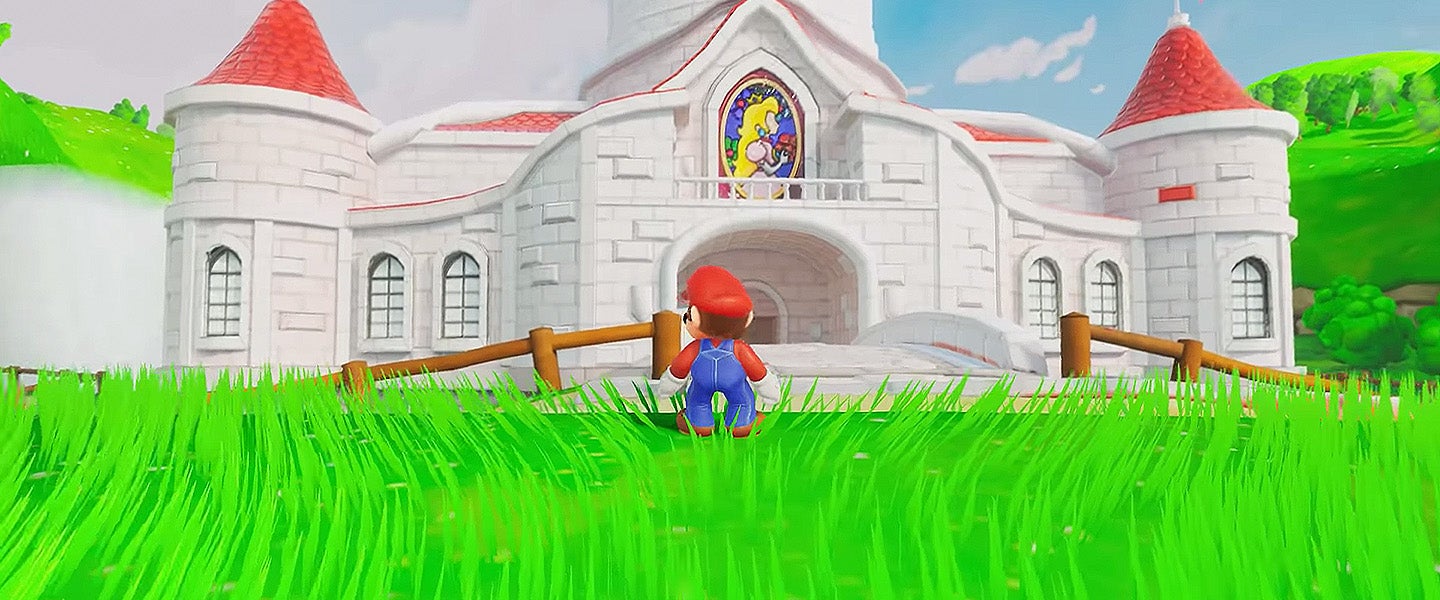Nearly six hours a day for the last three years, 24-year-old Harold de Boer has been mapping, measuring and remastering every single pixel in Super Mario 64 — even down to each blade of grass. “It’s a painstaking process,” he says of restoring the 1996 game, which was Nintendo 64’s flagship title and is still considered one of the greatest games of all time. “But I’m passionate about it because I’ve loved the game since my childhood. And if you love the game as much as I do, it’s worth it.”
In fact, recreating the game has become a game itself, de Boer says, so much so that he loses track of time when he’s working on it. “You have to redo everything: 3-D models, textures, music, sound effects, characters, animations, everything. You can’t just take a 3-D model from the original game and put it in your remake, because it would look terrible,” he explains.
To that end, “recreating” is probably the wrong word. Because the only thing he’s really “recreating” is the gameplay. Everything else he makes from scratch. And because expectations around graphics and detail are so high today compared to 1996, he can’t just throw blue overalls on Mario and call it a day. He needs to add realistic hair, stitches on all that denim and more to give him the depth of detail contemporary gamers expect. The same goes for every tree, cannon, bush, brick wall and, well, everything else. “But not too many details,” he adds, “because it still needs to maintain the feel of the old game.”
From time to time, too, he just has to use his imagination. “Occasionally, the low-resolution of the original art is so poor — or things are missing — that it’s hard to tell what the artists were going for. So I have to make it up. For example, Wet Dry World is a level where the water rises as the player hits these objects, but the water never actually came from anywhere, so I gave the level pipes that spew out water and then drain again.”

To do this for every level, de Boer extracts the original files from the game and uses them as a template, especially for sizing and dimensions within the world. Once he finishes making all the objects in HD, he loads everything into the recreated level and adds the necessary texture — “grass, shading, bricks and all sorts of stuff to bring more life into the scene.”
The thing is, the game still isn’t playable at this stage. For that, de Boer enlists a powerful software called Unreal Engine, which essentially adds physics to the world he’s created. “The engine takes your models and adds collision, gravity and such so characters won’t fall through floors or walk through walls.” It also brings the surroundings to life. For example, with a cannon, “you’d give it a sound effect and particle effect like smoke and an explosion coming out; then you’d tell the engine it has to shoot a projectile in the direction it’s facing with the proper speed added to it.”
“From there, you code Mario, giving him animations so he can jump and run around your level. But don’t think you’re done yet,” de Boer laughs. “Because you’ve still got everything else you need to code — enemies like the little Bob-ombs moving around and exploding, not to mention King Bob-omb and his artificial intelligence. Then there’s being able to pick up coins and stars and all that.”
“It’s a pretty complicated task and involves a lot of coding,” de Boer continues. “Luckily, I have a lot of great people to help me out.”

Helping, though, is a system in and of itself — there is, for instance, an application process. “I started a Discord server a few years back to share my progress and hopefully recruit some others to help. Now we’ve got a ton of people creating great 3-D models, music, animations and even textures for the project while I keep focus on the bigger things, like entire levels and getting everything to work and fit right.”


More largely, while de Boer would love to see Nintendo do the work for him, he doesn’t feel like waiting for them to do so. “When I started, there wasn’t anyone else giving the old games a new life, including Nintendo. But these older games just had so much effort and creativity put into them; I don’t think their outdated graphics should hold them back,” he tells me. “Even younger kids who didn’t grow up with the game see my remake and want to play it, which gives credence to my belief that modern games all look and feel the same.”
For now, de Boer and his team have finished recreating the levels, but still have a way to go in coding and animating everything. Not that he’s planning on stopping anytime soon. “It’s about more than just nostalgia,” he explains. “It’s like revisiting an old school 20 years later and getting all the amazing feelings and memories flooding back, which is such a great, powerful experience.”

